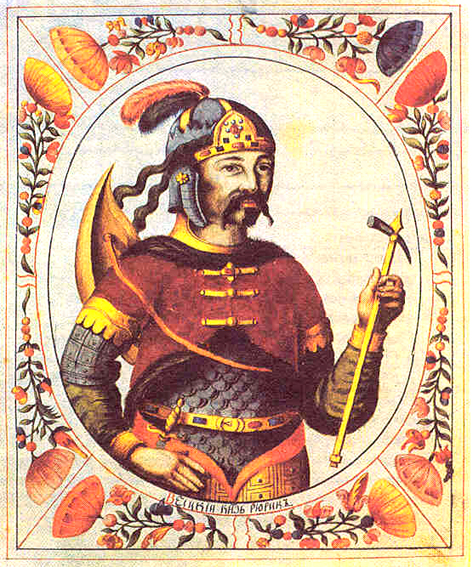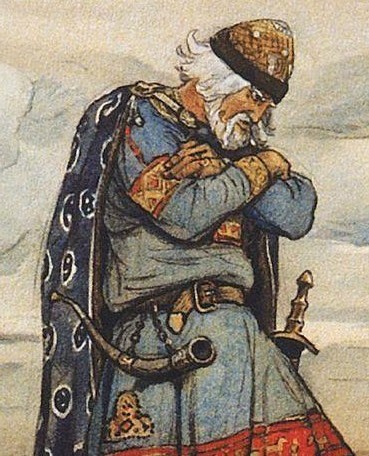|
Roman Of Kiev
Roman Rostislavich (Cyrillic: Роман Ростиславич) (died 1180), Prince of Smolensk (1160–1172, 1177–1180), Grand Prince of Kiev (Kyiv, 1171–1173, 1175–1177) and Prince of Novgorod (1178–1179). He was the son of Rostislav Mstislavich. Temporarily installed as Grand Prince of Kiev in July 1171, he was quickly replaced by Andrey Bogolyubsky's brother, Mikhail of Vladimir.'' The Contest for the "Kievan Succession" (1155-1175): The Religious-Ecclesiastical Dimension'', Jaroslaw Pelenski, Harvard Ukrainian Studies, Vol. 12/13, Proceedings of the International Congress Commemorating the Millennium of Christianity in Rus'-Ukraine (1988/1989), 776. He had a son: Mstislav III of Kiev Mstislav Romanovich the Old ( uk, Мстислав Романович Старий; russian: Мстислав Романович Старый) (died 1223) was Prince of Pskov (1179–?), Smolensk (1197–?), Belgorod (1206), Halych (?–?) and Gra .... References Succession ... [...More Info...] [...Related Items...] OR: [Wikipedia] [Google] [Baidu] |
Cyrillic
, bg, кирилица , mk, кирилица , russian: кириллица , sr, ћирилица, uk, кирилиця , fam1 = Egyptian hieroglyphs , fam2 = Proto-Sinaitic , fam3 = Phoenician , fam4 = Greek script augmented by Glagolitic , sisters = , children = Old Permic script , unicode = , iso15924 = Cyrl , iso15924 note = Cyrs (Old Church Slavonic variant) , sample = Romanian Traditional Cyrillic - Lord's Prayer text.png , caption = 1780s Romanian text (Lord's Prayer), written with the Cyrillic script The Cyrillic script ( ), Slavonic script or the Slavic script, is a writing system used for various languages across Eurasia. It is the designated national script in various Slavic, Turkic, Mongolic, Uralic, Caucasian and Iranic-speaking countries in Southeastern Europe, Eastern Europe, the Caucasus, Central Asia, North Asia, and East Asia. , around 250 million people in Eurasia use Cyrillic a ... [...More Info...] [...Related Items...] OR: [Wikipedia] [Google] [Baidu] |
Prince Of Novgorod
The Prince of Novgorod (russian: Князь новгородский, ''knyaz novgorodskii'') was the chief executive of the Republic of Novgorod. The office was originally an appointed one until the late eleventh or early twelfth century, then became something of an elective one until the fourteenth century, after which the Vladimir-Suzdal, Prince of Vladimir (who was almost always the List of Russian rulers#Grand Princes of Moscow, Prince of Moscow) was almost invariably the Prince of Novgorod as well. The office began sometime in the ninth century when, according to tradition, the Viking (Varangian) chieftain Rurik and his brothers were invited to rule over the Eastern Slavs, but real reliable information on the office dates only to the late tenth century when Vladimir the Great was prince of Novgorod. The office or title technically continued up until the abdication of Nicholas II in 1917 – among his titles (although Tsar#Full style of Russian Sovereigns, his list of titles ... [...More Info...] [...Related Items...] OR: [Wikipedia] [Google] [Baidu] |
Grand Princes Of Kiev
The Grand Prince of Kiev (sometimes grand duke) was the title of the ruler of Kiev and the ruler of Kievan Rus' from the 10th to 13th centuries. In the 13th century, Kiev became an appanage principality first of the grand prince of Vladimir and the Mongol Golden Horde governors, and later was taken over by the Grand Duchy of Lithuania. Princes of Kiev Mythological rulers According to Slavophiles, Kyi ruled since 430, one of the dates attributed to the legendary founding of Kiev in 482, although that date relates to Kovin on the Danube in Serbia. Some historians speculate that Kyi was a Slavic prince of eastern Polans in the 6th century. Kyi's legacy along with Shchek's is mentioned in the Book of Veles, the authenticity of which, however, is disputed. Oleg, an apocryphal Kiev voivode, probably of Danish or Swedish origin, ruled under the overlordship of the Khazar Khaganate. Bravlin was a Varangian prince or chieftain, who led a Rus military expedition to devastate the Cr ... [...More Info...] [...Related Items...] OR: [Wikipedia] [Google] [Baidu] |
Princes Of Novgorod
The Prince of Novgorod (russian: Князь новгородский, ''knyaz novgorodskii'') was the chief executive of the Republic of Novgorod. The office was originally an appointed one until the late eleventh or early twelfth century, then became something of an elective one until the fourteenth century, after which the Prince of Vladimir (who was almost always the Prince of Moscow) was almost invariably the Prince of Novgorod as well. The office began sometime in the ninth century when, according to tradition, the Viking (Varangian) chieftain Rurik and his brothers were invited to rule over the Eastern Slavs, but real reliable information on the office dates only to the late tenth century when Vladimir the Great was prince of Novgorod. The office or title technically continued up until the abdication of Nicholas II in 1917 – among his titles (although his list of titles was rarely given in complete form) was Prince of Novgorod the Great. After the chief Rurikid prince ... [...More Info...] [...Related Items...] OR: [Wikipedia] [Google] [Baidu] |
Princes Of Smolensk
The Prince of Smolensk was the ''kniaz'', the ruler or sub-ruler, of the Rus' Principality of Smolensk, a lordship based on the city of Smolensk. It passed between different groups of descendants of Grand Prince Iaroslav I of Kiev until 1125, when following the death of Vladimir Monomakh the latter's grandson Rostislav Mstislavich was installed in the principality, while the latter's father Mstislav I Vladimirovich became Grand Prince. It gained its own bishopric in 1136. It was Rostislav's descendants, the Rostaslavichi, who ruled the principality until the fifteenth-century. Smolensk enjoyed stronger western ties than most Rus' principalities. Grand Duchy of Kiev (Princes of Smolensk) * 1010–1015 Stanislav Vladimirovich Yaroslavichi * 1054–1057 Viacheslav I Yaroslavich * 1057–1060 Igor I Yaroslavich * 1060–1073 Sviatoslav I Yaroslavich * 1073–1077 Vladimir I Monomakh * 1077–1085 Vladimir II Vsevolodich Monomakhovichi/Sviatoslavichi * 1092-1093 Mstislav I * 1093� ... [...More Info...] [...Related Items...] OR: [Wikipedia] [Google] [Baidu] |
Rurik Dynasty
The Rurik dynasty ( be, Ру́рыкавічы, Rúrykavichy; russian: Рю́риковичи, Ryúrikovichi, ; uk, Рю́риковичі, Riúrykovychi, ; literally "sons/scions of Rurik"), also known as the Rurikid dynasty or Rurikids, was a noble lineage founded by the Varangian prince Rurik, who established himself in Novgorod around the year AD 862. The Rurikids were the ruling dynasty of Kievan Rus' (after the conquest of Kiev by Oleg of Novgorod in 882) before it finally disintegrated in the mid-13th century, as well as the successor Rus' principalities and Rus' prince republics of Novgorod, Pskov, Vladimir-Suzdal, Ryazan, Smolensk, Galicia-Volhynia (after 1199), Chernigov, and the Grand Duchy of Moscow (from 1263). Following the disintegration of Kievan Rus', the most powerful state to eventually arise was the Grand Duchy of Moscow, initially a part of Vladimir-Suzdal, which, along with the Novgorod Republic, established the basis of the modern Russian natio ... [...More Info...] [...Related Items...] OR: [Wikipedia] [Google] [Baidu] |
1180 Deaths , synthetic chemical element with atomic number 118
{{Numberdis ...
118 may refer to: *118 (number) *AD 118 *118 BC *118 (TV series) *118 (film) *118 (Tees) Corps Engineer Regiment *118 (Tees) Field Squadron, Royal Engineers See also *11/8 (other) *Oganesson Oganesson is a synthetic chemical element with the symbol Og and atomic number 118. It was first synthesized in 2002 at the Joint Institute for Nuclear Research (JINR) in Dubna, near Moscow, Russia, by a joint team of Russian and American scient ... [...More Info...] [...Related Items...] OR: [Wikipedia] [Google] [Baidu] |
Year Of Birth Missing
A year or annus is the orbital period of a planetary body, for example, the Earth, moving in its orbit around the Sun. Due to the Earth's axial tilt, the course of a year sees the passing of the seasons, marked by change in weather, the hours of daylight, and, consequently, vegetation and soil fertility. In temperate and subpolar regions around the planet, four seasons are generally recognized: spring, summer, autumn and winter. In tropical and subtropical regions, several geographical sectors do not present defined seasons; but in the seasonal tropics, the annual wet and dry seasons are recognized and tracked. A calendar year is an approximation of the number of days of the Earth's orbital period, as counted in a given calendar. The Gregorian calendar, or modern calendar, presents its calendar year to be either a common year of 365 days or a leap year of 366 days, as do the Julian calendars. For the Gregorian calendar, the average length of the calendar year (the mea ... [...More Info...] [...Related Items...] OR: [Wikipedia] [Google] [Baidu] |
Sviatoslav III Of Kiev
Sviatoslav III Vsevolodovych (Ukrainian and Russian: Святослав III Всеволодич) (died 1194), Prince of Turov (1142 and 1154), Volyn (1141–1146), Pinsk (1154), Novhorod-Siverskyi (1157–1164), Chernihiv (1164–1177), Grand Prince of Kiev (1174, 1177–1180, 1182–1194). He was the son of Vsevolod II Olgovich. He succeeded in taking the Kievan throne from Yaroslav II, and ruled Kiev alongside Rurik Rostislavich Rurik Rostislavich (Russian and Ukrainian: Рюрик Ростиславич) (died 1215), Prince of Novgorod (1170–1171), Belgorod Kievsky (currently Bilohorodka; 1173–1194), Grand Prince of Kiev (Kyiv, 1173, 1180–1181, 1194–1201, 1203� ... until his death. The co-princedom did not go smoothly and there were disagreements between Sviatoslav and Rurik, until Sviatoslav was taken ill and died on 27 July 1194. Notes and references 1126 births 1194 deaths People from Chernihiv Grand Princes of Kiev Rurikids Rurik d ... [...More Info...] [...Related Items...] OR: [Wikipedia] [Google] [Baidu] |
Yaroslav II Of Kiev
Yaroslav II Iziaslavich (russian: Ярослав Изяславич; uk, Ярослав Ізяславич) (died 1180?), Prince of Turov (1146), Novgorod (1148–1154), Lutsk (1154–1180) and Grand Prince of Kiev (Kyiv, 1174–1175, 1180). He was the son of Iziaslav II of Kiev and Agnes Hohenstaufen and the brother of Mstislav II of Kiev. Biography After the murder of Andrey Bogolyubsky Andrew I (died 28 June 1174), his Russian name in full, Andrey Yuryevich Bogolyubsky "Andrew made Vladimir the centre of the grand principality and placed a series of his relatives on the now secondary princely throne of Kiev. Later he also com ..., Yaroslav's relatives managed to maneuver him into the Kievan throne. He contended with a senior relative, Sviatoslav Vsevolodivich, for over two years before Sviatoslav eventually won power for himself and became the uncontested ruler of Kiev. Family He was married to Richeza, daughter Vladislaus II, King of Bohemia. * Ingvar Yaroslavich (?-12 ... [...More Info...] [...Related Items...] OR: [Wikipedia] [Google] [Baidu] |
Vsevolod The Big Nest
Vsevolod III Yuryevich, or Vsevolod the Big Nest ( rus, Все́волод III Ю́рьевич Большо́е Гнездо́, Vsévolod III Yúr'yevich Bol'shóye Gnezdó) (1154–1212), was Grand Prince of Vladimir from 1176 to 1212. During his long reign the city reached the zenith of its glory. Family Vsevolod was the tenth or eleventh son of Yuri Dolgoruky (c. 1099 – 1157), who founded the town Dmitrov to commemorate the site of Vsevolod's birth. Nikolai Karamzin (1766 – 1826) initiated the speculation identifying Vsevolod's mother Helene as a Greek princess, because after her husband's death she took Vsevolod with her to Constantinople. Vsevolod spent his youth at the chivalric court of the Komnenoi. On his return from the Byzantine Empire to Rus' in 1170, Vsevolod supposedly visited Tbilisi, as a local chronicle records that that year the Georgian king entertained his nephew from Constantinople and married him to his relative, an Ossetian princess. Reign In 1173 ... [...More Info...] [...Related Items...] OR: [Wikipedia] [Google] [Baidu] |





